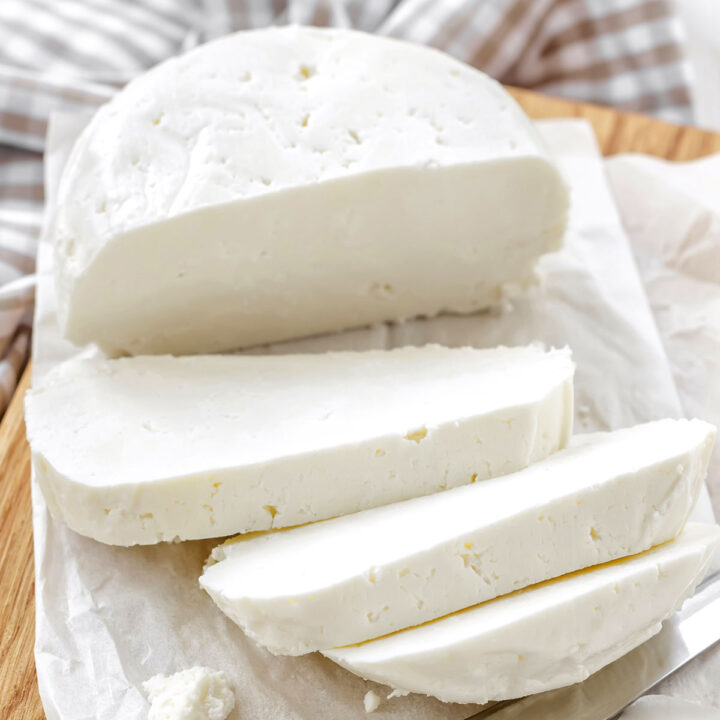Twaróg: Polish Farmer's Cheese
4.7
(16)
Your folders
Your folders
Prep Time: 5 minutes
Cook Time: 30 minutes
Total: 35 minutes
Servings: 1
Cost: $5.88 /serving
Author : Kasia

Ingredients
Export 2 ingredients for grocery delivery
Instructions
Step 1
Gently warm up the milk on the stove. By “gently”, I really mean it! Aim for a slightly warm (not hot!) temperature.
Step 2
If you’re using raw milk, sometimes a layer of thick cream forms on top - keep it or remove it (I love full-fat everything, so personally I keep it; but if you’re avoiding fats - get rid of it). When using raw milk, no sour cream is needed. Just proceed to Step 5.
Step 3
When using pasteurized milk from a store, add 8 heaped teaspoons of sour cream (or more!) per 2 quarts (roughly 2 litres) of milk.There is no need to measure the ingredients exactly, it will work either way.
Step 4
Blend milk and sour cream together with a fork.
Step 5
Pour the milk mixture into a large container, ideally a large cooking pot - that way we won’t have to transfer that milk later on.
Step 6
Cover the container (that’s optional). Some homecooks leave the container uncovered, others cover it with a cheesecloth to keep the insects away. I use a piece of a muslin square and secure it in place with a rubber band.
Step 7
Leave the milk in a warm place, for example: on the kitchen counter. Don’t stir it, don’t poke it - just let it be.
Step 8
The fermentation process can take anywhere from a few hours, up to 2 days. That depends on the temperature: if you live in a hot climate, it’s likely to be ready within a day. For me, it took a day and a half to curdle.
Step 9
Observe the milk, have a taste from time to time. Once it has curdled, the consistency turns jelly-like and the flavour becomes pleasantly sour - it’s ready. The longer you wait, the more sour the milk (and therefore eventually: the cheese as well) becomes.
Step 10
Carefully move the curdled soured milk into a cooking pot, try not to break the curd too much. If you soured the milk in a cooking pot from the get-go - just keep it there.
Step 11
Submerging the knife into the curd, cut it into large cubes, roughly 2 inch in size.
Step 12
Start heating the mixture on a ‘low’ heat. Slowly, gently. If you have a thermometer, aim for the 97-102°F (36-39°C) range in the centre of the pot.
Step 13
While heating, gently stir the ingredients from time to time. Start from the edge and then move to the center of the pot. Aim to keep the same temperature for 30 minutes, up to an hour.
Step 14
After that time, let the mixture cool completely (2-3 hours are usually enough)
Step 15
Place a strainer over a large bowl, to collect the strained whey. Layer it with a cheesecloth (I'm just using clean muslin squares). Pour the curled mixture in.
Step 16
Squeeze off the excess whey. Make a knot and hang to drain for 30-40 minutes.
Step 17
After draining, you can make it even dryer by pressing it. Just put something heavy (e.g. a jar filled with water) on top of the cheese wrapped in a cloth. The resulting Twaróg will be firmer and more compact.
Step 18
Refrigerate until you're ready to use it.